Storm nights of Spassk. The defeat and evacuation of Zemskaya rati
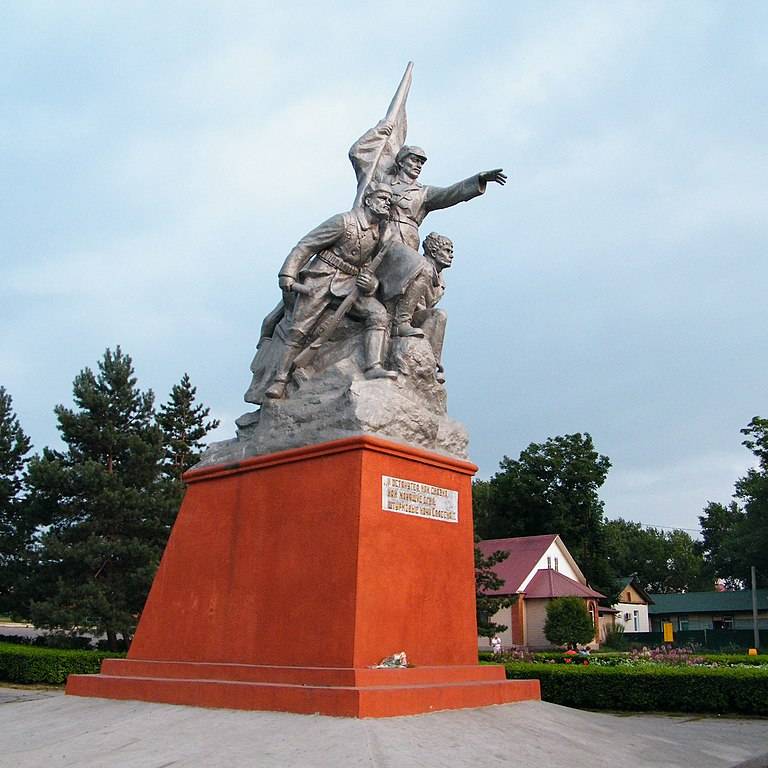
The city of Spassk-Dalny, a monument to the Red Army
The Red Army stormed Spassk for two days. Attacks and counterattacks were accompanied by massive artillery shelling, which plowed up the fortifications of the Whites.
Meeting engagement
On the morning of October 4, 1922, the Reds went on the offensive along the railway and, after a stubborn 2-hour battle, captured the Kraevsky junction. On October 5, Duhovsky was captured. On October 6, the 6th Khabarovsk and Troitskosavsky regiments launched an attack on st. Sviyagino.
The Kappelevites fiercely fought back (The last offensive of the white army in Russia). General Molchanov pulled up all the reserves, the Volga and Kama regiments, the cadets of the Kornilov school. The Volga region group of General Molchanov, with the support of two armored trains, went on a counterattack, trying to bring down the offensive impulse of the enemy and seize the initiative in their own hands. At Sviyagino, a fierce oncoming battle flared up. Furious firefight, developing into hand-to-hand combat, continued until late in the evening. The White Guards were able to repulse the enemy attacks, but they exhausted their reserves, the units suffered heavy losses, and there was nowhere to get new reinforcements. White had to retreat to their original positions.
The commander of the Volga group, making sure that the enemy could not be overthrown, and fearing a detour of the right flank (the Reds really went on a deep detour through the taiga), decided to withdraw the troops to the Spassky fortified area. The White Guards retreated, hiding behind the fire of armored trains, artillery and machine-gun teams, destroying the railway tracks. The retreat was successful, because the bypassing group of Reds could not reach the flank and rear of the Volga group of Whites in time. As a result, the Whites withdrew calmly to Spassk.
Yakov Pokus, trying to correct the mistake, decided to attack the Spassky fortified area on the move. On the morning of October 7, the order was given to attack and capture Spassk by evening. But the troops, tired from previous battles and marches, could not carry out this order.
The NRA advanced almost 50 km south and was able to capture an important white defense point - st. Sviyagino. However, it was not possible to complete the main task - to destroy the Volga grouping of the enemy. The White Guards, although they suffered heavy losses, left and entrenched themselves on the new, well-fortified line of the Spassky fortified area.
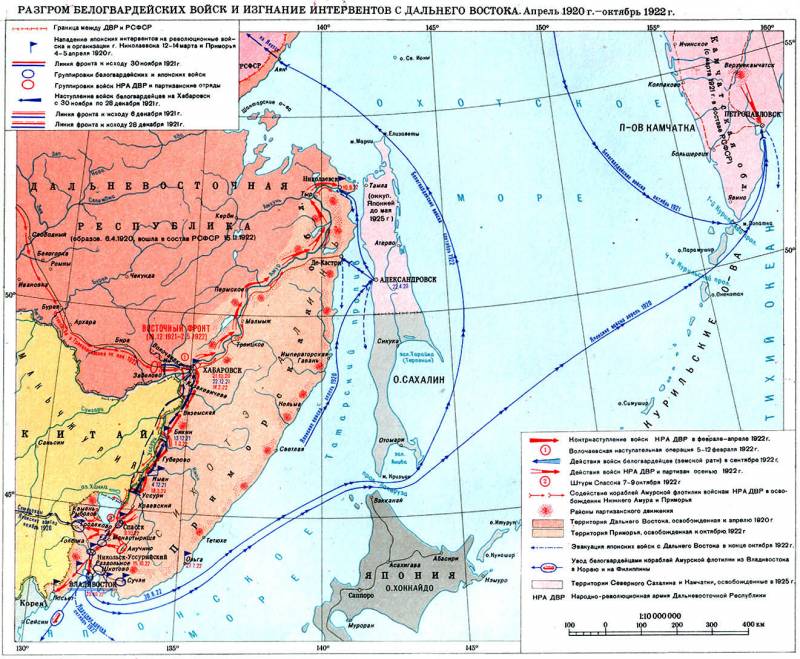
The failure of the first assault on Spassk
The Spassky fortified area was built by the Japanese in 1921. Being in a 40-kilometer defile between about. Khanka and the western spurs of the Sikhote-Alin ridge, the fortified area closed the entrance to South Primorye. The fortified area was designed for a garrison of one division and had seven field-type forts, they were interconnected by trenches, with dugouts, protected by wire fences in 3-5 rows and were able to support each other with fire. The Japanese handed over the fortified area to the whites with all the equipment, in a condition suitable for a long defense.
Spassk could not be bypassed from the east or west by large forces. The fortified area had to be taken by storm. However, the white command made a mistake: they did not hasten to transfer the rest of the groups to the most dangerous sector, reinforcing the Volga group with the remaining forces and means. The high command hoped for the strength of the fortifications of Spassk. With a sufficient garrison, the Spassky fortified area could hold out longer, holding down the enemy.
The Reds continued the offensive with two shock groups. Vostretsov's detachment - the 5th Amur and 4th Volochaevsky rifle regiments, the Troitskosavsky cavalry regiment and the divisional school of the junior command staff of the 2nd Amur division, was supposed to attack from the Slavyanka area in the south direction, strike at Fort No. 3 and capture Spassk. The Pokus Detachment - the 6th Khabarovsk Regiment, a foot division of the Separate Far Eastern Cavalry Brigade, 2 artillery batteries and an armored train, advanced from the north and northwest in the railway direction and was supposed to take Fort No. 1 and the northwestern outskirts of Spassk. The Far Eastern Cavalry Brigade received the task of breaking through on the left flank to the village of Prokhory behind enemy lines.
The Khabarovsk regiment launched an attack in the early morning of October 8. After a long fierce battle, the Red Army soldiers were able to break into the northwestern outskirts of the city by 17 o'clock. But it was not possible to develop success and capture Fort No. 1. The White Guards repulsed the attacks with strong artillery and machine-gun fire. A night attack on the fort was also unsuccessful. The Red Army soldiers were forced to retreat in order to avoid unnecessary losses, retaining their positions in the north-west of Spassk.
Vostretsov's group acted worse. The 5th Amur Regiment attacked head-on between Khvalynka and Slavyanka, trying to break through between forts No. 2 and 3. But the Reds ran into wire fences and were subjected to heavy flanking fire from fort No. 3. The Red Army soldiers were forced to retreat. The attack of the cavalry on the left flank was also repelled.
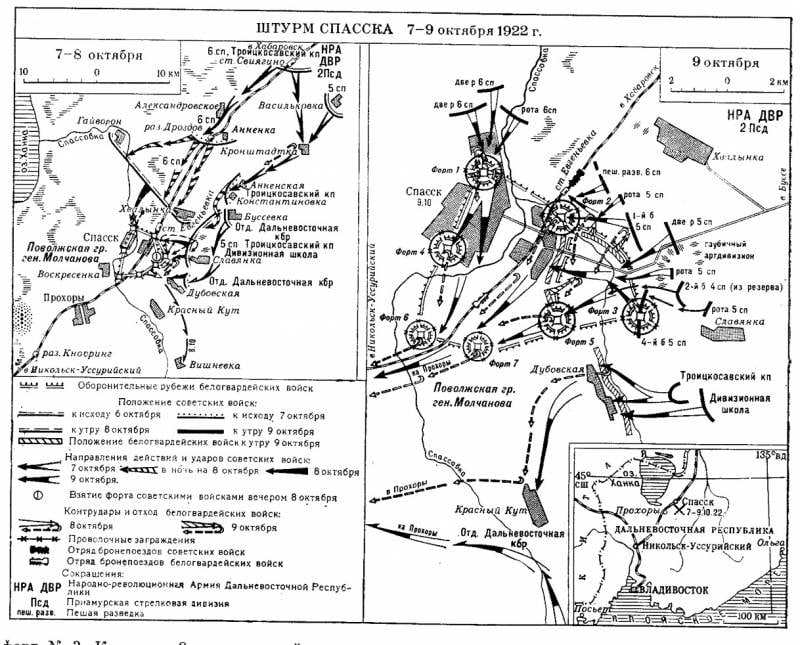
The fall of the fortified area
The failure of the first assault showed that it was impossible to take the fortified area on the move. It is necessary to identify and suppress enemy firing positions, to punch holes in the barriers. In the afternoon, we concentrated an artillery group (20 guns) and began methodically hitting Fort No. 3. After a 5-hour shelling, the 5th Amur Regiment again went on the offensive and, after a stubborn battle, captured the fortification at 23:3. The remnants of the white garrison of Fort No. XNUMX withdrew to the outskirts of the city and entrenched themselves in the military camp. At night, the Whites counterattacked three times, trying to recapture the fort, but they were driven back.
At night, the Reds prepared to continue the assault. The Pokus group was still aimed at Fort No. 1. The Vostoretsov group received the task of taking the military camp, and the cavalry brigade - to bypass the enemy.
On the morning of October 9, after a short artillery preparation, the red units again went on the assault. The Whites also fought fiercely and repelled attacks in all directions. The Reds were forced to withdraw, and the command again resorted to artillery fire. For an hour, artillery hit the identified enemy firing points. At about 10 o'clock the Red Army went on a new assault. On the left flank, the Troitskosavsky Cavalry Regiment, together with the divisional school, were able to break into Dubovskaya and knock out a white cavalry squad from there. Developing success, the red cavalrymen and cadets reached the village of Krasnokuty and captured it at about 14 o'clock.
At the same time, the 6th Khabarovsk Regiment, after a fierce battle, was able to break into Fort No. 1 and captured the northern part of the city. The Reds, developing the offensive, pushed the Whites back to the cement plant on the southern outskirts of the city. Parts of the Khabarovsk and Amur regiments captured Fort No. 2 and Art. Evgenievka. The main forces of the Amur regiment captured the military town. Developing success, the red command in the middle of the day brought the 4th Volochaevsky regiment from the reserve into battle. He captured the last fortification of the Whites on the eastern front of the defense - Fort No. 5.
By 14:30 p.m., the Whites had lost five out of seven forts and, being subjected to constant attacks from the north and east, were forced to leave Spassk. Forts No. 6 and 7 were under the threat of encirclement, so they were left without a fight. The White Guards retreated to the south, hiding behind a barrier of 600 fighters and armored trains. The attacks of the red cavalry were repulsed, and the whites with great difficulty were able to leave in the direction of Art. Flour. The partisans were unable to complete the task of encircling the Volga group, because they were connected by battles with the White Cossacks of General Borodin.
The Volga group lost more than 1 thousand people, three batteries and an armored train in the battle for Spassk. The NRA, having captured the enemy's strategic defense center, was able to develop an offensive in South Primorye.
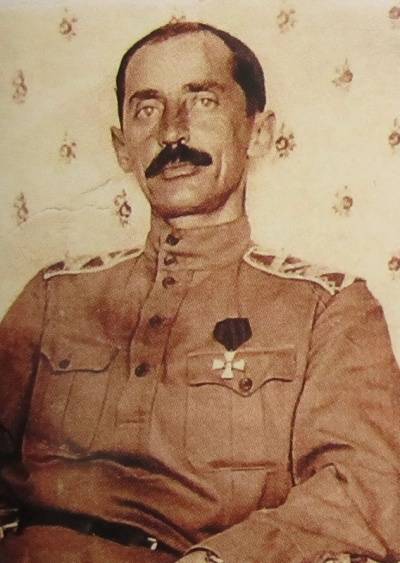
A prominent figure in the White movement in Siberia and the Far East Viktorin Mikhailovich Molchanov (1886–1975)
The defeat of the main forces of the Zemstvo rati
The Red Army continued the offensive in two main operational directions:
1) along the Ussuri railroad;
2) on Grodekovo.
The Volga group, reinforced by parts of the Siberian Cossack group of General Borodin, desperately tried to stop the enemy. On October 10, there was a battle at the turn of Altynovka - Dmitrovka. On October 11, the vanguard of the 2nd Amur Division - the 6th Khabarovsk Regiment, fought a heavy battle for several hours on the line of st. Flour - Chernigovka. The White Guards managed to be thrown back only after the main forces of the division approached. On October 12, the Reds shot down the enemy from the third position near the village. Chalcedon. On the night of October 13, the Far Eastern Cavalry Brigade, which was advancing on the left flank of the 2nd Amur Division, moved to the Grodekovo direction and, having forced the river. Lefu, captured Vadimovka with a fight.
Uborevich again tried to take the main forces of the Whites into the encirclement, destroy them, preventing them from going abroad. Vostretsov's group again went around, pulled ahead and took up positions near the village of Monastyrishche, blocking the white road to the south.
The White command unraveled this plan and prepared a counterattack. The Far Eastern Cossack group of General Glebov and all reserves from Vladivostok were transferred from the Shkotovo region. On October 13, the whites went on the offensive in the direction of the Monastery and Chalcedon with two shock groups. The left group, consisting of 2,3 thousand bayonets and sabers with 28 machine guns and 5 guns, dealt the main blow, moving along the Ussuri railroad. The right group of up to 1,5 bayonets and sabers was supposed to cover the left flank of the 2nd Amur Division and moved east of the railway from Lyalichi to Monastyrishche. Izhevsk in bloody attacks were able to bring down the barrier of the Reds.
The Red Command immediately responded to this enemy operation in the Nikolsk-Ussuri direction. The Far Eastern Cavalry Brigade was supposed to go from Vadimovka around the left wing of the enemy and strike at Voznesensky. The 1st Trans-Baikal Division was also aimed at Voznesenskoye. The 2nd Amur Division was to deliver the main blow to the right wing of the Zemskaya rati and bypass the enemy from the east. The partisans were given the task of advancing from the Anuchino region to Lyalichi and destroying the railway bridge across the river. Lefou in the Kremovo area, in order to cut off the white escape route to the south.
The offensive began on the morning of 14 October. The red cavalry freed Luchki with a quick blow and continued their attack on Voznesenskoye. The 1st Trans-Baikal Rifle Division also pressed the enemy. At about 12 o'clock Voznesenskoye was occupied by the Reds. On the left wing, the fighting was more fierce. White attacked. But, having learned about the fall of Voznesensky, they retreated to Lyalichi and beyond. By the end of the day, the Reds occupied Lyalichi and Kremovo.
In the course of a stubborn battle near Voznesensky and near the Monastery, the NRA defeated the main forces of the Zemstvo rati. The last white army was drained of blood and could no longer offer serious resistance.
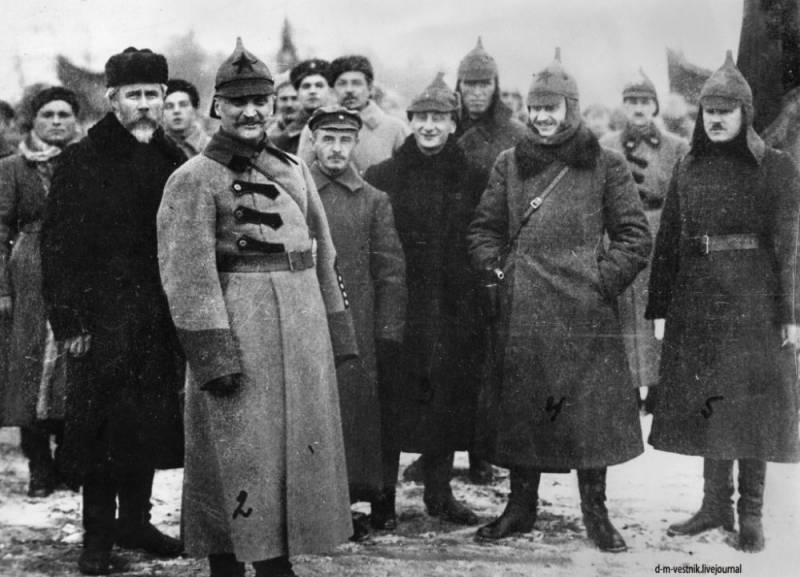
The commander of the Soviet troops of Siberia N. N. Petin (No. 2) and the commander of the NRA of the DRV I. P. Uborevich (No. 4) in Vladivostok
Completion of operation
The Red Command moved the Amur Division to the south with the aim of capturing Nikolsk-Ussuriysk, and the Separate Far Eastern Cavalry Brigade and the 1st Trans-Baikal Division moved to the Galenka-Grodekovo region. On October 15, the Soviet cavalry, having traveled up to 30 km, occupied Galenka, cutting off the escape routes of the Siberian enemy group. On October 16, the 1st Trans-Baikal Division defeated the Siberian group of General Smolin and occupied Grodekovo.
The 2nd Amur Division, moving south, occupied Nikolsk-Ussuriysky on October 15. The White troops at Razdolny were divided into two groups, one began to retreat to the Korean border (to Posyet), the other to Vladivostok. At Razdolny, the 2nd Amur Division was sent to Posyet, and the 1st Transbaikal Division was sent from Grodekovo to Vladivostok.
The war was lost. There was no point in defending Vladivostok. Only destroy the remnants of the white army. Moreover, in the conditions of a shortage of ships, panic, with the Reds following on the heels, the evacuation could turn into a disaster. Therefore, the main forces from Ussuriysk went southwest, across the Suifun River (now Razdolnaya) and moved towards Posyet. And from there on foot across the border into the CER lane. There was a corresponding agreement with the actual ruler of Manchuria, Zhang Zuolin.
The voivode of the Zemsky rati Diterichs himself, morally killed by defeat, left with the army. Power in Vladivostok was given to the "three-day government" headed by Sazonov. It no longer played any role. The rest of the power was with the commander of the Siberian flotilla Admiral Stark, under whose command there were ships, naval gunners, the Russian-Serbian volunteer detachment and the police. Preparations for the evacuation began. The evacuation plan was developed in two versions. According to the first, the flotilla went to Posyet, took away troops and left for Sakhalin or Kamchatka in order to create a new center of the White movement in Russia and continue the struggle. According to the second - the ships went to China.
In Vladivostok itself, until October 15, it was quiet. The news of the heavy fighting, the retreat of the Zemstvo rati did not bother the townspeople. Everything was already in the past: battles, retreat, consolidation on new frontiers. As before, there was hope for Japanese help. Japanese troops were still in the city. Even when the city learned about the complete defeat of the Zemstvo rati, few left on steamboats that went from Vladivostok to foreign ports.
But when the Reds occupied Ussuriysk, panic began. People tried to buy tickets for steamships, prices went up sharply, they rushed to get visas at foreign consulates. On October 19, the consulates closed, foreign diplomats moved to their ships, which were in the port.
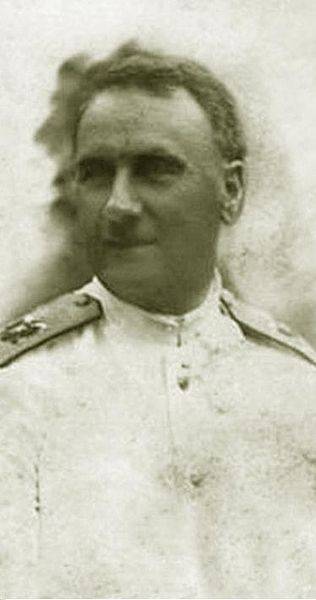
Commander of the Siberian Flotilla Georgy Karlovich Stark (1878–1950)
Evacuation and liberation of Vladivostok
On October 19, at about 13 pm, the 1st Trans-Baikal Division was already 9 km from Vladivostok. Here the Reds ran into the Japanese, who put up a barrier. The Japanese command began to threaten that in the event of a conflict between parts of the NRA and Japanese troops, the evacuation would be stopped. The Red Command withdrew troops from the city.
The Cossacks of Glebov's group - Ussuri, Amur and Transbaikal - were able to leave for the city. Glebov began to negotiate with the Japanese about the charter of several ships for evacuation. The Japanese and opponents of the Soviet government hastily loaded valuables and equipment onto ships, destroyed fortifications, ammunition depots, and drowned the property that they could not take away. Many citizens decided to stay in the city when they learned that regular units of the Red Army, and not partisans, would enter the city (this led to robbery and massacre).
On October 22, the governments of the RSFSR and the DRV appealed to Tokyo with a protest about the delay in the evacuation of troops from Vladivostok. On October 23, Stark stole the ships of the Siberian Flotilla from Vladivostok, having 10 thousand refugees on board. In total, 25 ships left the city, then ships from Kamchatka and the Sea of Okhotsk joined them, and the number of flotilla pennants increased to 30. The ships went to Posyet. There was the headquarters of the commander, and the main part of the Kappelites had already gone further, to the border. They went to China. Dieterichs and Stark finally rejected the option of leaving to the north in order to continue the fight. The army was defeated and demoralized, there was no supply. We decided to go to Korea, from where we could get to the CER.
The remnants of the Zemsky rati went to Manchuria. Zhang Zuolin did not fulfill his promise to support the Whites. Parts were disarmed and disbanded. Gradually, Russian refugees scattered around the world.
At the end of November 1922, the Siberian Flotilla arrived at the Korean port of Genzan, which at that time was under the rule of the Japanese. From here there was a railway to Seoul, Mukden and Harbin. Therefore, most of the refugees landed here, which arrived from Vladivostok earlier, on private ships. But then the Manchu ruler, who did not want a new wave of Russian refugees, forbade the issuance of visas.
Refugees from the Siberian flotilla were not allowed into the city at all. The Japanese accepted only the wounded, then allowed them to live in customs barracks in the port. In December, the flotilla left for Shanghai, where they landed the remaining civilians. The ships then left for Manila, where the ships and property were sold. The sailors traveled around the world.
On October 24, the Japanese signed an agreement on the cleansing of Vladivostok and adjacent territories no later than 16 p.m. on October 25, 1922. On October 25, units of the Red Army solemnly entered Vladivostok.
On November 13, 1922, the People's Assembly of the DRV decided to establish Soviet power in the entire Russian Far East and asked the All-Russian Central Executive Committee and the Congress of Soviets to annex the Far East to the Russian Socialist Federative Soviet Republic.
On November 16, 1922, the All-Russian Central Executive Committee declared the Far Eastern Republic an inseparable part of the RSFSR. The long-term hard struggle ended with the victory of the Soviet government in the Far East.
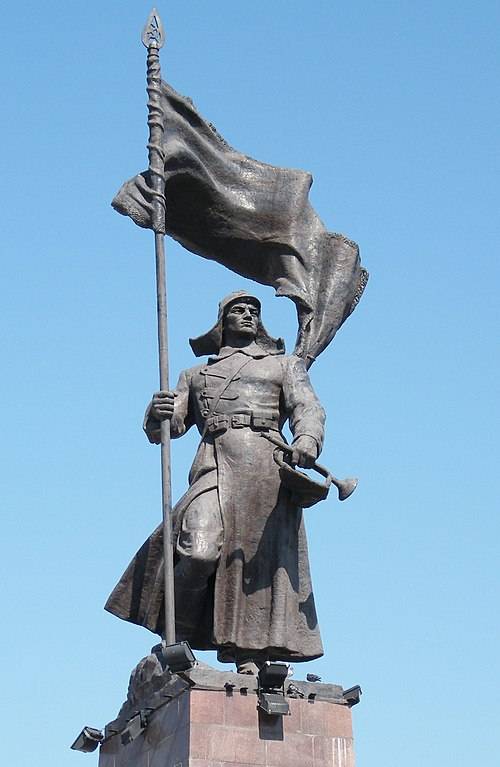
Monument to the Fighters for Soviet Power in the Far East
Information